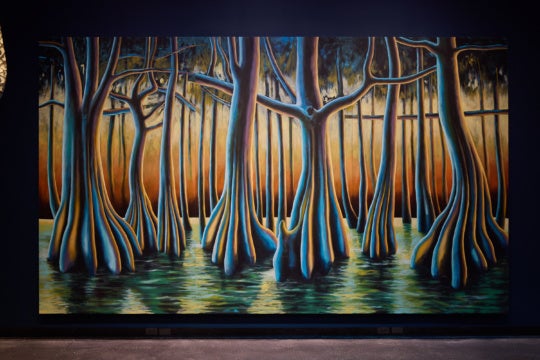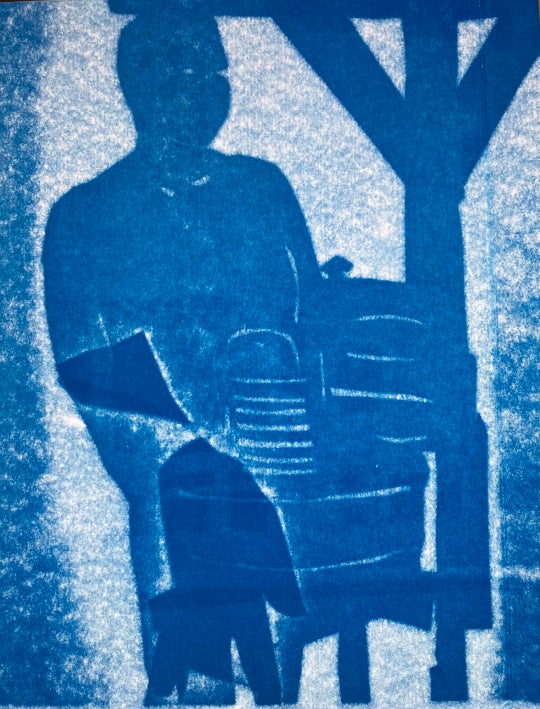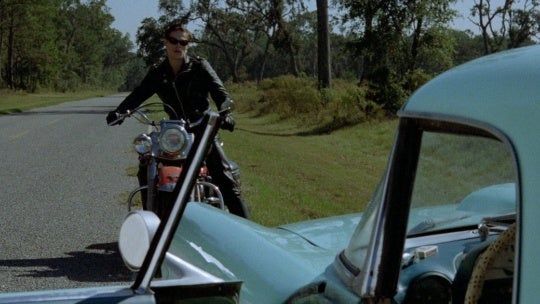There is an old math joke: “Why do parallel lines never meet?” The answer: “Because they were never introduced.”
As faculty members in the Ernest G. Welch School of Art and Design at Georgia State University, Jess Jones and Dawn Haynie crossed paths many times. But it was only around this time last year, Haynie tells me, that the two began speaking with each other about their work and “realized the unique parallels … and the potential power in exhibiting these works side-by-side.” “Parallels,” which reopened August 14-September 19 in GSU’s Welch Galleries (after an initial run from May 12 to July 3), places their works contemplating the Atlanta landscape in dialogue.
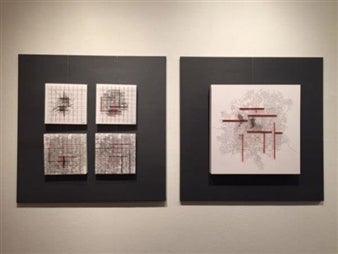
Cynthia Farnell, the GSU gallery director, says the decision to extend the exhibition came as a result of positive feedback as well as an impulse to provide access to incoming students at the start of the semester. “The themes that run through the show, such as the individual, personalized, and sometimes politicized ways in which we navigate and negotiate the urban environment,” Farnell says, “are very relatable to incoming students and their experiences.”
Jones, a textile artist, found herself navigating the city through visual landmarks, such as transient graffiti scrawls. When her graffiti markers were painted over or otherwise removed, she felt lost, even in familiar landscapes. “I couldn’t explain why,” Jones reveals. “Having lived in Atlanta for about five years, I still feel new to the city and it feels unfamiliar to me, even now.”
As a researcher, Haynie focuses on the patterns and structure of the American city and how they affect our behavior and experience. But for Jones, Haynie’s research provided an illuminating guide for navigating the labyrinthine Atlanta landscape. Haynie points out, “In essence, Dawn’s work captures what is intuitively experienced when navigating the urban form of Atlanta—the initial mistakes made in its development, and the subsequent accommodations necessary for those that live there—while my work provides a greater understanding and context for why these instances occur in the urban fabric.”
The connections go beyond their experiences and work, even extending to their shared language and imbedded political awareness. Jones mentions that “in several papers, Dawn uses textile references to describe the city,” such as “patchwork.” (Though Jones herself finds “crazy quilt” more adequate.) Although she does not consider her work overly political, Jones maintains that issues such as inequality and gentrification are absolutely part of the work.
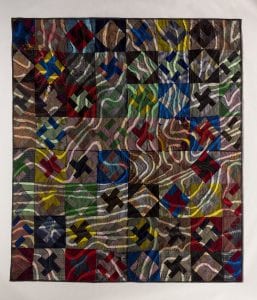
Pieces by Haynie and Jones are hung side-by-side, allowing visitors to see the similar conclusions they draw from their respective starting points. One wall features Haynie’s Atlanta as Unintelligible and Splintered, maps of Atlanta from 1853 and 1995 that highlight the city’s disjointed relationship of intelligible structures and high density areas. Next to the maps hangs Jones’s Landscape Plotted & Pieced, a delicate, transparent hand-dyed silk organza quilted “map” of downtown Atlanta.
On the opposite wall, Haynie’s Atlanta as Landscape and Jones’s TopoQuilt (Avondale Marta) focus more specifically on Decatur, a suburban branch of the city. Atlanta as Landscape shows an aerial view of Avondale Estates and Decatur, while TopoQuilt (Avondale Marta) features the Avondale Marta area’s topographical information sewn onto a found quilt. Though suburban planners intend to create a sense of place, these works demonstrate that developments often divide existing communities.
On the back wall, works by Jones and Haynie physically intersect. Haynie’s Atlanta as Negotiated Memories maps out Atlanta streets in string on the wall. Jones’s Street Calligraphy series is installed over this string configuration, each piece a snapshot detail of graffiti from areas such as the Krog Street Tunnel, Reynoldstown, and Memorial Drive. These snapshots are then printed onto layered textures of cottons, silks, and lace to create a visual texture mimicking concrete.
Jones compares the graffiti markers to breadcrumbs in her urban journey, recalling the tale of Hansel and Gretel, or perhaps lost children in the “City in the Forest.” By comparison, Haynie’s research, embodied by her stringed skeleton of Atlanta as Negotiated Memories, can be compared to Ariadne’s thread, offering a guide for navigating the urban labyrinth created by the flawed logic of redevelopment.
“Parallels: Jess Jones and Dawn Haynie” will be on view at Georgia State University’s Ernest G. Welch Galleries through September 19.

